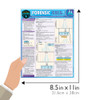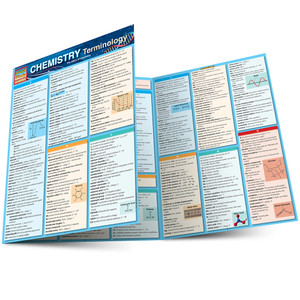Essential principles of forensic chemistry and toxicology for core crime scene evidence analysis concisely written by expert in the field Suzanne Bell, PhD from Los Alamos National Laboratory, then professor at Eastern Washington University, and Chair of the National Commission on Forensic Science. The wealth of answers in this 6-page, laminated, color-coded outline format, including equations, graphs and diagrams cannot be missed for those studying in this field and well beyond school for a quick look-up and refresher. QuickStudy guides are proven to boost retention and test scores, and as customers attest, are handy throughout a career. Also buy Dr. Bell’s Forensic Science guide to complete the pair and ad these powerful and simple-to-use tools to your library for a price so low it’s a crime.
6 page laminate guide includes:
- Measurement Science
- Metrology
- Uncertainty
- Fundamentals of Statistics
- Assuring Data Quality
- Calibration & Control Charts
- Method Validation
- Sampling
- Measurement Uncertainty (MU)
- Key Chemical Concepts
- Equilibrium Constants
- Partitioning
- Ionizable Centers
- Acidic & Basic Functional Groups – Diagrams & Range Table
- Instrumentation
- Chromatography
- Performance Metrics
- Mass Spectrometry
- Spectroscopy
- Seized Drug Analysis
- Drugs as Physical Evidence
- Controlled Substances Act (CSA)
- Drug Classification
- Analytical Methods
- Forensic Toxicology
- Pharmacokinetics (ADME)
- Kinetics of Elimination
- Blood & Breath Alcohol
- Common Sample Types & Lab Analysis
- Evidence Associated with Combustion
- Combustion
- Thermodynamics of Combustion Reactions
- Fire Debris Analysis
- Forensic Investigation of Fire Deaths
- Explosives
- Firearm Discharge Residue
- Methods of Analysis
- Serial Number Restoration
- Trace Evidence
- Trace & Transfer Evidence
- Miscroscopy
- Analysis
- Types of Trace Evidence
- Characterizing Color


















